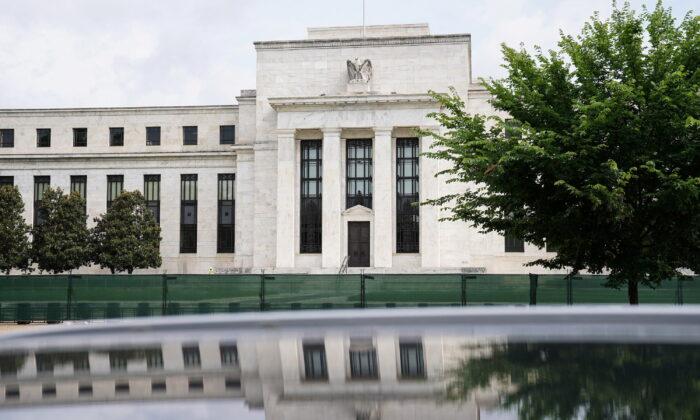According to the latest minutes, FOMC participants conceded that there’s a substantial risk of entrenched inflation, with the inflation outlook deteriorating. This, officials argued, required a three-quarter-point rate increase.
The central bank thinks inflation will remain above 2 percent for quite some time.
On the broader economy, most FOMC members anticipate downside risks to economic growth, warning that the Fed rate boosts may have a larger-than-expected effect on the overall economy.
“Participants concurred that the economic outlook warranted moving to a restrictive stance of policy, and they recognized the possibility that an even more restrictive stance could be appropriate if elevated inflation pressures were to persist,” the minutes stated.
“Many participants judged that a significant risk now facing the Committee was that elevated inflation could become entrenched if the public began to question the resolve of the Committee to adjust the stance of policy as warranted.”
The Fed also trimmed its growth forecast for the rest of the year, projecting that the GDP will expand just 1.7 percent in 2022, down from the 2.8 percent expectation earlier this year.
While the Fed does believe the economy expanded in the second quarter, growth in business fixed investment “appeared to be slowing” and housing sector activity “appeared to be softening.”
“Correspondingly, participants indicated that they had revised down their projections of real GDP growth for this year, consistent with ongoing supply chain disruptions and tighter financial conditions,” the summary of the Fed meeting stated. “Participants noted that the imbalance between supply and demand across a wide range of product markets was contributing to upward pressure on inflation. They saw an appropriate firming of monetary policy and associated tighter financial conditions as playing a central role in helping address this imbalance and in supporting the Federal Reserve’s goals of maximum employment and price stability.”
The leading U.S. benchmark indexes edged higher on July 6 following the release of the minutes. The U.S. Treasury market was mostly green, with the benchmark 10-year yield rising to 2.93 percent.
The U.S. Dollar Index, which measures the greenback against a basket of currencies, remained above 107.00, a more than 20-year high.
In recent weeks, the Fed has turned hawkish to address rampant price inflation.
The FOMC will host its next two-day meeting on July 27 and 28.
Despite the path of rate hikes that the Fed is laying, futures trading shows that investors are anticipating that the institution will cut interest rates next year after peaking at about 3.4 percent by February. Traders believe the Fed’s rate will decline to 2.7 percent by December 2023, expecting that monetary stimulus will be used to resuscitate growth and support the stock market.
Over the past month, recession fears have intensified as an influx of data paint a negative portrait of the U.S. economy.
These concerns have accelerated the selloff in many asset classes in the financial markets. The debate on Wall Street now is about how severe an economic downturn could be. But it’s evident that the Fed is causing the hemorrhaging, says Matt Kishlansky, the principal head of asset allocation at GenTrust.
“Market participants have spent the past few months watching the economy choking on inflation,” he wrote in a research note on July 5. “The choking has gotten worse the past 30 days. The Fed has stood up in the middle of a crowded restaurant and is attempting to pull off an economic Heimlich maneuver, to squeeze really hard and hope it works.
“We’re all confident they can stop the choking, but like all the diners at nearby tables, market participants are taking cover because they think the result is likely to be a big mess. And I think it’s pretty hard for everyone else to just go on with their meal until the whole thing plays out.”
During the trading session on July 5, the spread between the 2-year and 10-year yields dipped below zero three times.
The yield curve inversion is a chief recession indicator since it indicates that the long-term economic outlook is bleak because the short-term rate is higher than the long-term one. The tool has predicted all but one recession since 1955.





